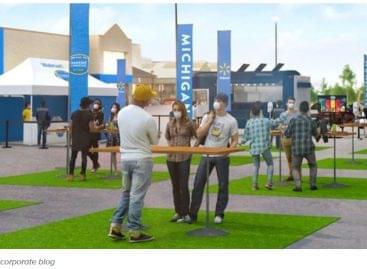Shopper experience in the retail sector (Part 2)
In the previous issue we were discussing how to improve the shopper experience. Now it is time we gave you practical advice and recommended tools that can help develop closer ties with shoppers. First steps: 1. Smaller efforts – understanding the exact timeline of shoppers helps to point out and solve problems. 2. Personalisation – the style, timing and frequency of communication can be personalised. However, not all possible personalisations are necessary too. 3. Multichannel sales – not all channels have the same level of importance. Multichannel selling requires a standardised experience in the different channels.
4. Mapping the trip – shoppers not only want to move between channels: they also want every moment of the shopper experience to have shared characteristics. 5. Proactive communication – this doesn’t mean simple outbound communication; the essence of proactive communication is sending valuable messages to consumers already before they ask for them. 6. Human relations – it is important to understand the emotions of shoppers. 7. Automation – automatic devices can’t fulfil their roles if they don’t have free access to the stories of customers, and to the information they gathered.

Advanced level: 8. Complete integration – connecting information and channels satisfy the needs of both workers and customers. 9. Integrated shopping process and shopper profile, from which a story unfolds – not all pieces of data are equal; we must make sure that data is standardised and a timeline is created. 10. Automate everything that can be automated – by this the company gives customer service the chance to have more valuable conversations with customers. 11. Utilising analytics tools – by performing in-depth analysis, companies can acquire the information they need.
12. Think with the head of the shopper – if we understand what happens to the shopper during their ‘trip’, we learn what matters to them. 13. New-generation shopping experiences – for instance a shoe shop that also sells online can free up space in its warehouse and build a basketball court, where customers can try their new shoes. 14.Loyalty programmes have the advantage – they are key tools in creating customer profiles. 15. Digital and personal data collection – why not measure real emotions, collected personally or online, which could help us learn more about customers?
16. Demand the most from partners and suppliers! – a brand’s reputation equals the quality level of its worst partner. 17. Optimise product return – make product return for customers as simple as possible. Getting to know about shoppers leads to having happier, more dedicated and efficient employees. When retail workers can easily have relevant information on the given customer, they can personalise the service. Taking into consideration the whole shopper experience is the first step on the road to success. //
Related news
Fall experiencies in Walmart
🎧 Hallgasd a cikket: Lejátszás Szünet Folytatás Leállítás Nyelv: Auto…
Read more >Variations on experience
🎧 Hallgasd a cikket: Lejátszás Szünet Folytatás Leállítás Nyelv: Auto…
Read more >Shopper experience in the retail sector (Part 1)
🎧 Hallgasd a cikket: Lejátszás Szünet Folytatás Leállítás Nyelv: Auto…
Read more >Related news
(HU) A nap mondása
🎧 Hallgasd a cikket: Lejátszás Szünet Folytatás Leállítás Nyelv: Auto…
Read more >(HU) Kautzky Szemők Adrienn: Vigyázzunk a sarlatánokkal
🎧 Hallgasd a cikket: Lejátszás Szünet Folytatás Leállítás Nyelv: Auto…
Read more >The Hortobágy fish farm delivers one hundred tons of fish to stores every day
🎧 Hallgasd a cikket: Lejátszás Szünet Folytatás Leállítás Nyelv: Auto…
Read more >






